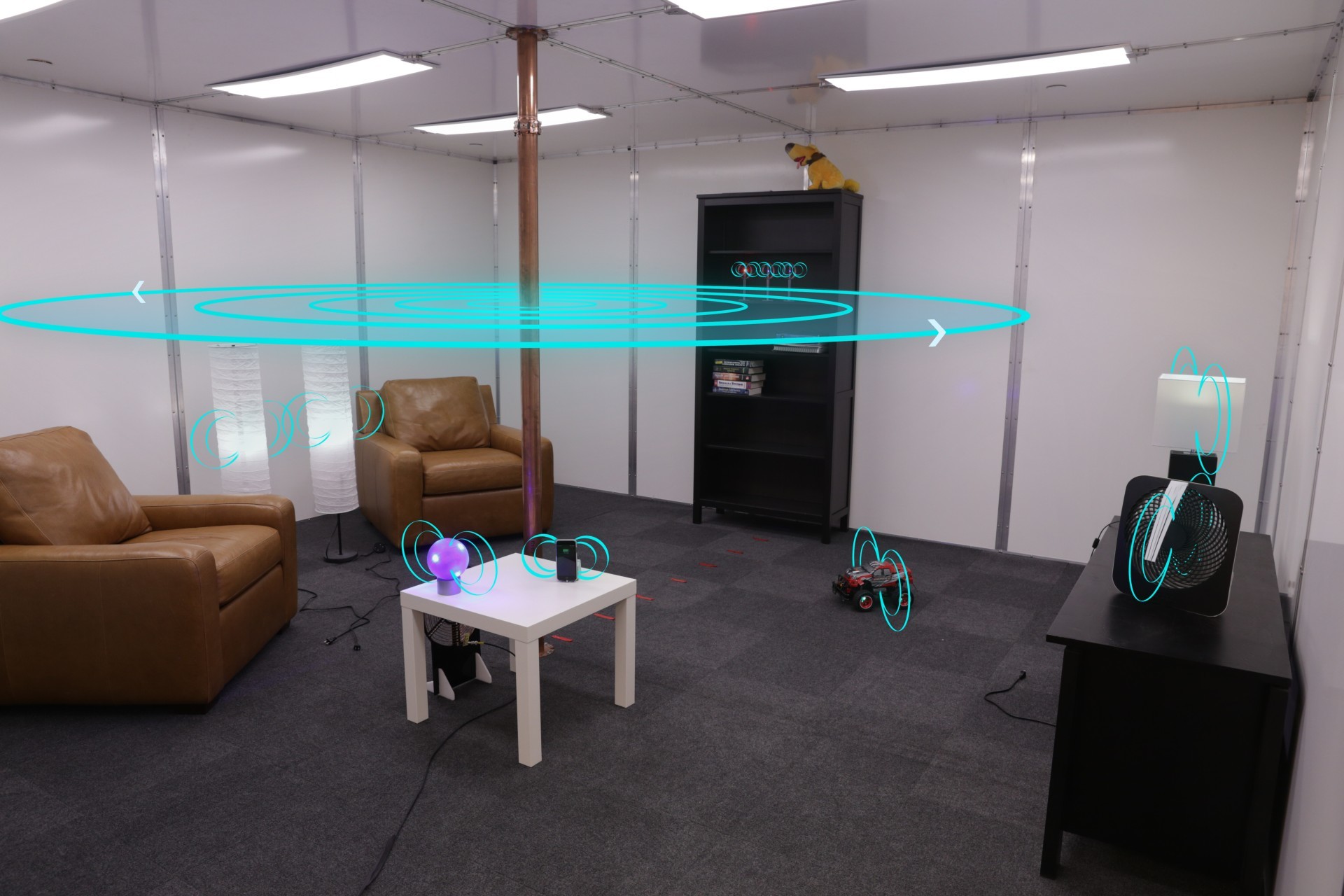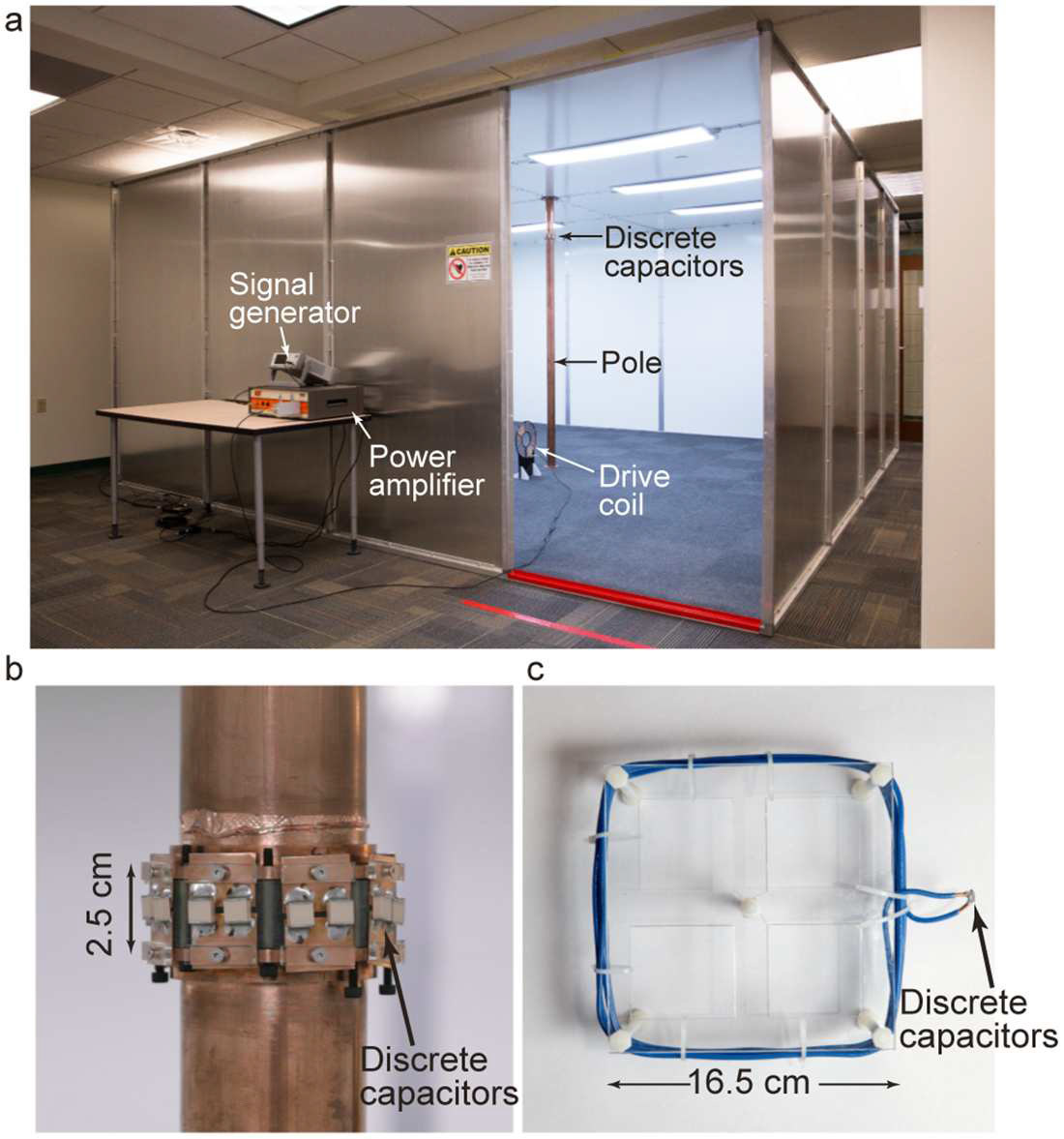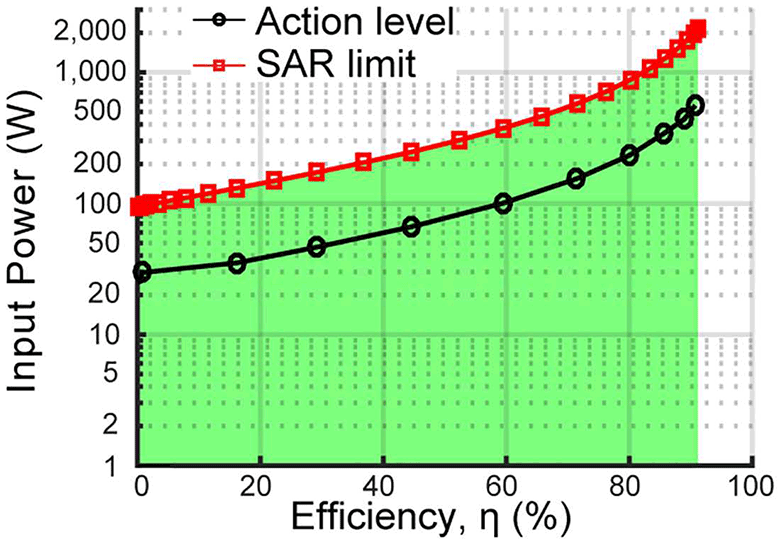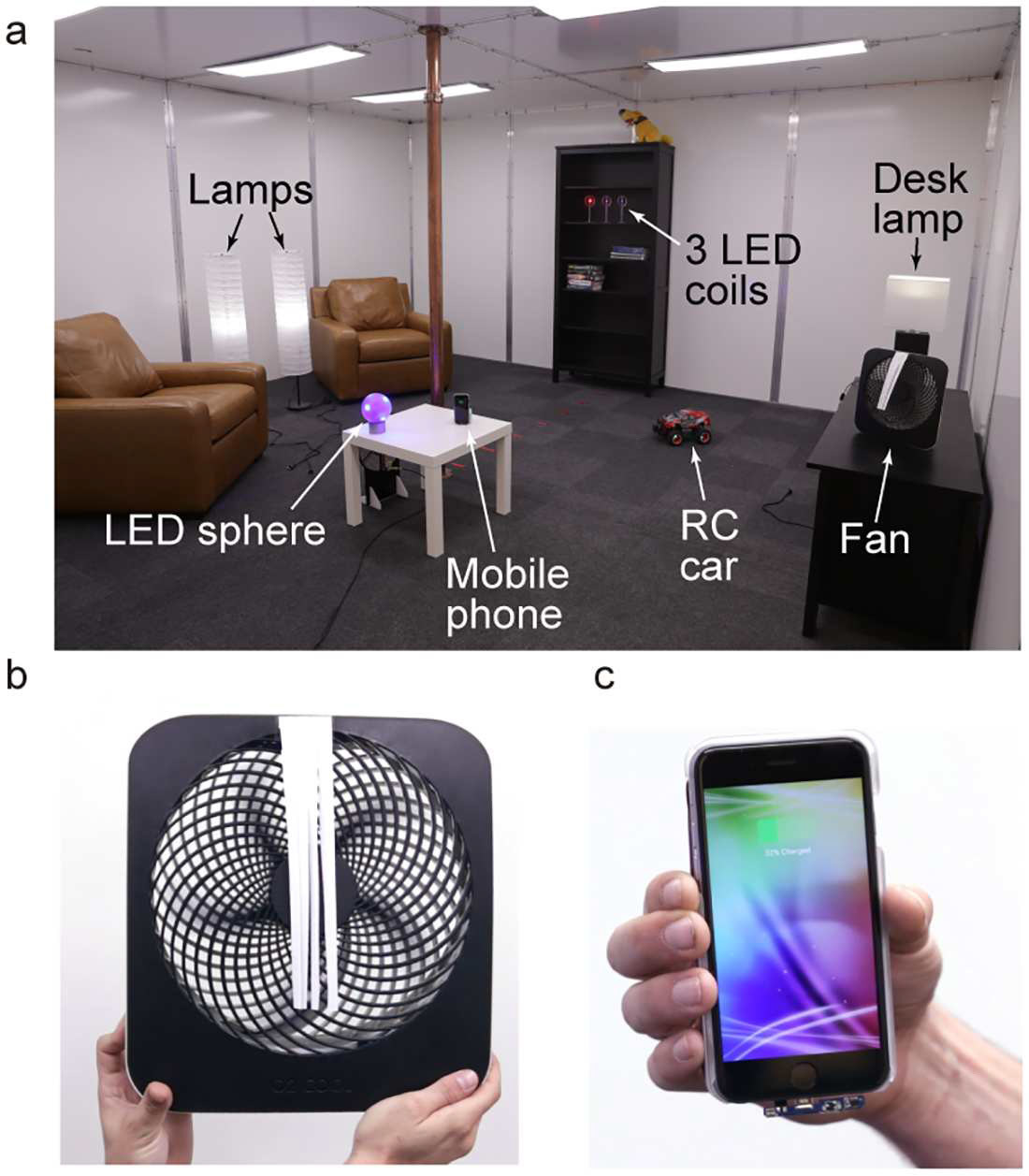Wireless transmission up to 1900 watts per room with an efficiency of 45-95%

Isolated chamber (room) 5 × 5 × 2.3 m with walls, floor and ceiling with aluminum coating. 15 capacitors on the central column complete the quasistatic resonator circuit
Progress in wireless data transmission has taught a person to the idea that when entering the apartment, the smartphone immediately connects to home WiFi. All devices in the house by default access the Internet via WiFi through a home access point. No wires - beauty. The only problem is that electricity is not transmitted in exactly the same convenient way, and each device still has to be connected by wire. Robotics and medicine suffer from the same problem. It is very inconvenient to connect gadgets to the outlet every time.
More years ago, Nikola Tesla showed how to transmit electricity at a distance (and Maxwell, Heaviside, and Hertz were shown to him), but engineers have so far failed to implement this invention in a convenient technology for practical use with a sufficiently high efficiency. There is another problem: it is not known how wireless transmission of electricity through the body affects the body over a long period of time, so the regulatory authorities in many countries have imposed strict regulatory restrictions on this technology.
Due to regulatory restrictions and potential security problems, engineers have to find a compromise between the distance for wireless power transmission and the maximum amount of energy that can be safely transmitted through the human body in a residential area. For example, energy transfer by radiation (radiation heat exchange) has become widespread in radio communications, but it safely transfers only a few milliwatts, which is not enough to charge ordinary gadgets.
')
Therefore, instead of energy transfer by radiation in household electrical appliances, it is customary to use non-radiation transfer methods, such as induction charging and resonant charging . There are completely different capacities there: tens or hundreds of watts are transmitted with very fast attenuation in space over short distances. Safety is provided by the transfer of energy from a potentially dangerous electric field to a magnetic field , with large losses and low efficiency. But the phenomenon of the binding of near fields is very limited in distance. Transmission efficiency drops rapidly if the distance from the transmitter to the power receiver exceeds the diameter of the coil . In addition, it is impossible to normally connect in one field coils, very different in diameter .
Since 2014, a group of physicists under the leadership of Matthew Chabalko (Matthew J. Chabalko) conducted a series of successful experiments on the use of standing electromagnetic waves in the far field to generate a uniform electric field in the metal cavity . These experiments overcome the limitations of previous technologies.
To test this theory, Matthew Chabalko and his colleagues at Disney Research’s research and development unit developed a practical method for charging electrical devices at a distance — a method called Quasistatic Cavity Resonance (QSCR) , that is, a “quasistatic cavity cavity”. This is already a real technology that can be applied in practice if the regulatory authorities allow it.
The point is that standing electromagnetic waves in the far field fill the space of the resonant structure with uniform magnetic fields, which allows using small receivers in these zones, such as in ordinary household appliances.
To create an oscillatory circuit, it is necessary to pass the resonant current along walls, floor and ceiling through specially designed metal structures - for example, aluminum metal sheets. A device with capacitors is installed at any place in the room, which completes the circuit of the oscillating circuit (in the experiment, 15 high-Q capacitors of 7.3 pF each were installed, which provided a resonance of 1.32 MHz). As a result, uniform magnetic fields are formed inside the room. A conceptual diagram of a quasistatic cavity cavity is shown in the illustration.

Magnetic fields decay from the column to the walls with a coefficient less than 1 / p, which makes it possible to use energy receivers with coils in the whole room thousands of times smaller than the size of the QSCR resonator.

The scheme of the isolated chamber (room) and the oscillatory circuit in the experiment
Working in such a closed chamber allows you to transmit energy from a magnetic field into an electric field with an efficiency that is hundreds of times higher than in open space. This means that much higher energies can be transmitted without jeopardizing human health, while respecting the limits set by regulatory authorities.

QSCR wireless performance
In fact, if you scale the camera to the size of a room, office or storage room, it becomes possible to effectively wirelessly charge the mobile gadgets that are inside the circuit.

Electrical devices that receive wireless energy inside the room during the experiment
The effect of radiation on humans is small even near the capacitors on the column. The simulation showed that during the broadcast of 1900 W, the effect on the human body will not exceed the established norms in the specific absorption coefficient of electromagnetic energy per kilogram of the body (SAR).

Specific absorption coefficient. Note: in Russia, SAR is considered as the coefficient of absorbed power not per gram of fabric, as in the USA and Europe, but per square centimeter.
The experiment of physicists from Disney Research was conducted in a room of 54 m 3 . In it, the energy was transmitted to the receiver almost anywhere in the room with an efficiency from 40% to 95%.
The scientific work was published on February 15, 2017 in the journal PLOS One (doi: 10.1371 / journal.pone.0169045).
Source: https://habr.com/ru/post/401653/
All Articles